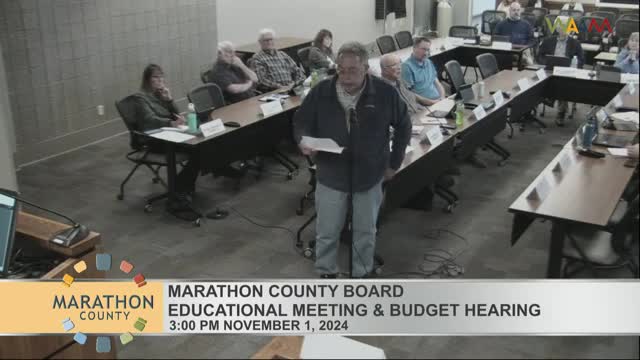County proposes million dollar tax cut for property owners
November 02, 2024 | Marathon County, Wisconsin
This article was created by AI summarizing key points discussed. AI makes mistakes, so for full details and context, please refer to the video of the full meeting. Please report any errors so we can fix them. Report an error »

During a recent government meeting, discussions centered on the county's financial strategies, particularly regarding property taxes and the allocation of funds. A proposal was put forth to reduce the 2025 property tax burden by $1 million without affecting employee positions or service levels. This would be achieved by decreasing the debt levy and increasing sales tax contributions to debt service, leveraging the county's substantial fund balances and the effective use of American Rescue Plan Act (ARPA) funding.
The proposal aims to adjust the capital improvement plan (CIP) rollover policy, which would allow the county to utilize an estimated increase in sales tax revenue—from $16 million to $17 million—while maintaining fiscal responsibility. The county's historical practice dictates that any surplus sales tax revenue rolls over into the CIP for future projects, ensuring that operational costs remain unaffected.
Board members also discussed the status of the highway department's relocation project, estimated to cost around $59 million. Plans are in place to utilize $26 million from the highway reserve to minimize borrowing needs, with the project expected to span approximately three years.
Additionally, the meeting addressed the urgency of allocating unencumbered ARPA funds, with a deadline approaching at the end of the year. The county currently has over $2 million in unallocated funds, which officials are working to designate for capital improvement projects to avoid losing the funds back to the federal government.
Overall, the meeting highlighted the county's proactive approach to managing its finances, ensuring that tax burdens are minimized while still addressing critical infrastructure needs.
The proposal aims to adjust the capital improvement plan (CIP) rollover policy, which would allow the county to utilize an estimated increase in sales tax revenue—from $16 million to $17 million—while maintaining fiscal responsibility. The county's historical practice dictates that any surplus sales tax revenue rolls over into the CIP for future projects, ensuring that operational costs remain unaffected.
Board members also discussed the status of the highway department's relocation project, estimated to cost around $59 million. Plans are in place to utilize $26 million from the highway reserve to minimize borrowing needs, with the project expected to span approximately three years.
Additionally, the meeting addressed the urgency of allocating unencumbered ARPA funds, with a deadline approaching at the end of the year. The county currently has over $2 million in unallocated funds, which officials are working to designate for capital improvement projects to avoid losing the funds back to the federal government.
Overall, the meeting highlighted the county's proactive approach to managing its finances, ensuring that tax burdens are minimized while still addressing critical infrastructure needs.
View full meeting
This article is based on a recent meeting—watch the full video and explore the complete transcript for deeper insights into the discussion.
View full meeting
